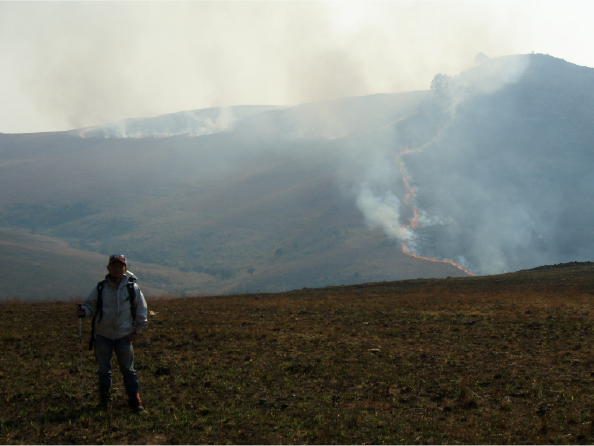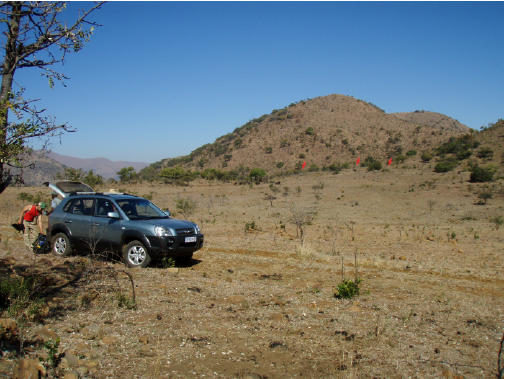Searching for Evidence of Giant Asteroid Impacts on the Early Earth
Don Lowe is the Max Steineke Professor in Earth Sciences at Stanford University. Much of his research focuses on rocks older than 3.0 billion-years-old and aims to use sedimentary principles to investigate early surface environments, the nature and role of early organisms, the role of giant meteorite impacts in early crustal development, and Archean basinal settings and tectonics. You can read more about his research past and present here.
We all know that he Earth formed by impacts during accretion: it was the collision of planetesimals that built the Earth from a small chunk of rock into a full-blown planet some 4.5 billion years ago. However, when did the rain of large objects, including both comets and asteroids, fall to its present low level? For many years, based on data from the moon, it was thought that the Late Heavy Bombardment (LHB) ended about 3.8 billion years ago and that by 3.5 billion years ago the number of large objects striking the Earth was nearly the same, low level it is today.
However, about 30 years ago, Prof. Gary Byerly of LSU and I discovered sedimentary layers in the Barberton area of eastern South Africa that contain evidence that large asteroids, 20 to perhaps 50 km across, struck the Earth 3.5 to about 3.2 billion years ago. Some of the main features of these layers are small, sand-sized spherical particles, termed spherules (Fig. 1), that formed when asteroids struck the Earth and vaporized large amounts of target rock and bolide. The vaporized rock was ejected above the atmosphere where it spread out and enveloped the Earth in a rock vapor cloud. As this cloud cooled, it condensed to form small liquid magma droplets that solidified to form spherules that fell to the surface like hail and formed the impact layers.

Fig. 1. Sand-sized spherules (about 0.1 mm in diameter) formed by the condensation of a rock vapor cloud generated during a giant asteroid impact 3.24 billion years ago.
It took over 25 years to convince the geological community as a whole that these layers did actually represent impact ejecta. It now appears that there exists in these rocks a record of up to 8 giant asteroid impacts between about 3.47 and 3.23 billion years ago, long after Late Heavy Bombardment was supposed to have ceased.
Today Gary and I continue that research, focused less on demonstrating that the layers do actually record impacts and more on trying to assess the effects of those impacts on local and global environments, crustal development, and biological evolution. These effects may have varied from heating the atmosphere to temperatures high enough that the oceans boiled to generating enormous tsunamis that may have circled the earth several times to burying the surface beneath 10s to 100s of meters of impact-generated debris. A record of these events is preserved in the geologic record: it just needs to be identified, read, and interpreted.
We return to South Africa each summer, generally in July, to continue this work. The Barberton area is a lovely mountainous terrain (Fig. 2), great for hiking, although there are many commercial forests that require extreme measures to prevent fires (Fig. 3) and some game reserves that present unique challenges of their own (Fig. 4), but there are also wide areas of grassland and rocky outcrops. The rocks are heavily deformed, faulted, and folded and much of their original composition has been changed over time. Our work today consists mainly of tracing individual layers, identifying outcrops where the impact deposits are well exposed, and mapping, measuring, and sampling these layers for later analysis. We hope through this work to continue to illuminate the early history of our planet.

Fig. 3. Much of the area is hilly grassland with rocky outcrops, subject to frequent burns as shown here.

Fig. 4. Game reserves offer special problems. Here we are getting ready to hike out from our vehicle in the morning with 3 rhinos (red arrows) and herd of wildebeest watching us get ready.
![]() This work is licensed under a Creative Commons Attribution-NonCommercial-ShareAlike 4.0 International License.
This work is licensed under a Creative Commons Attribution-NonCommercial-ShareAlike 4.0 International License.

